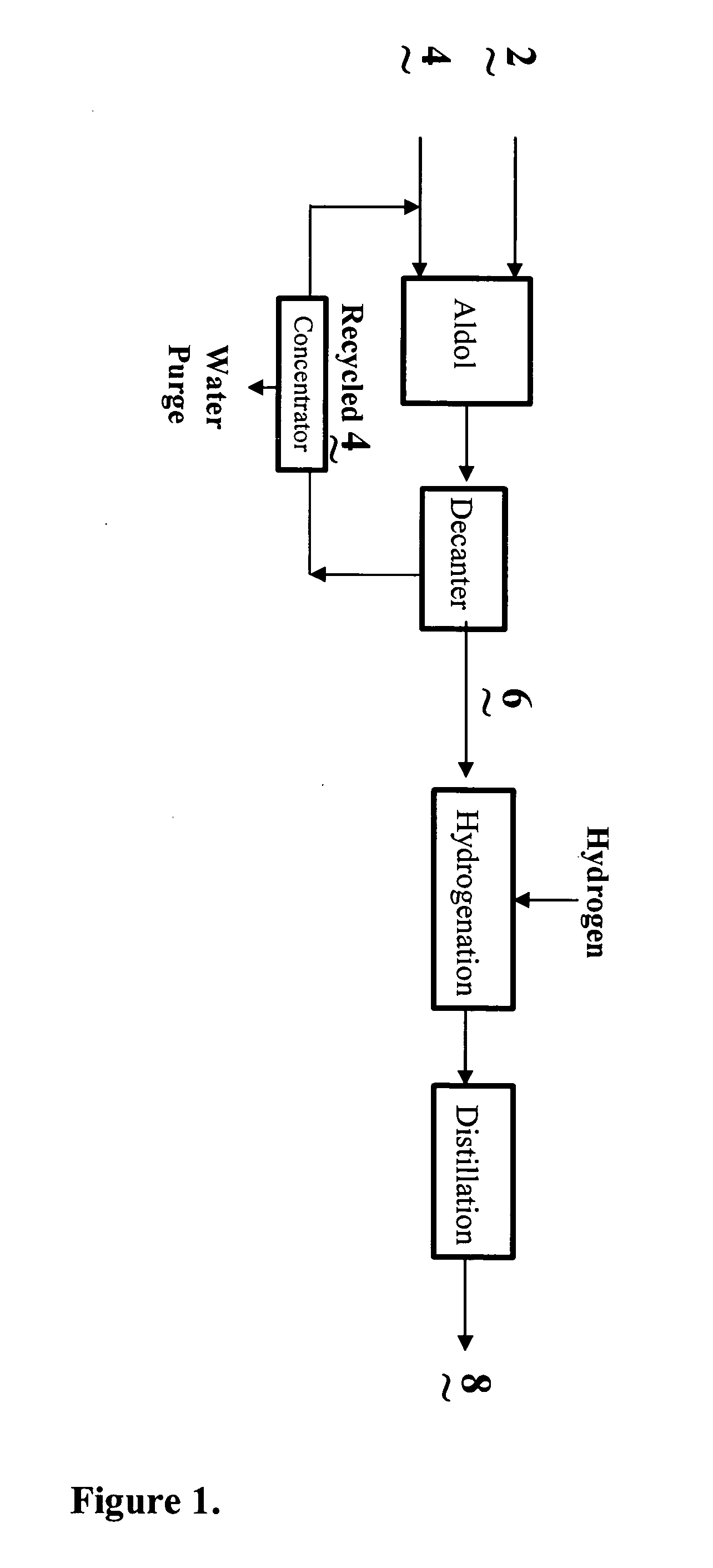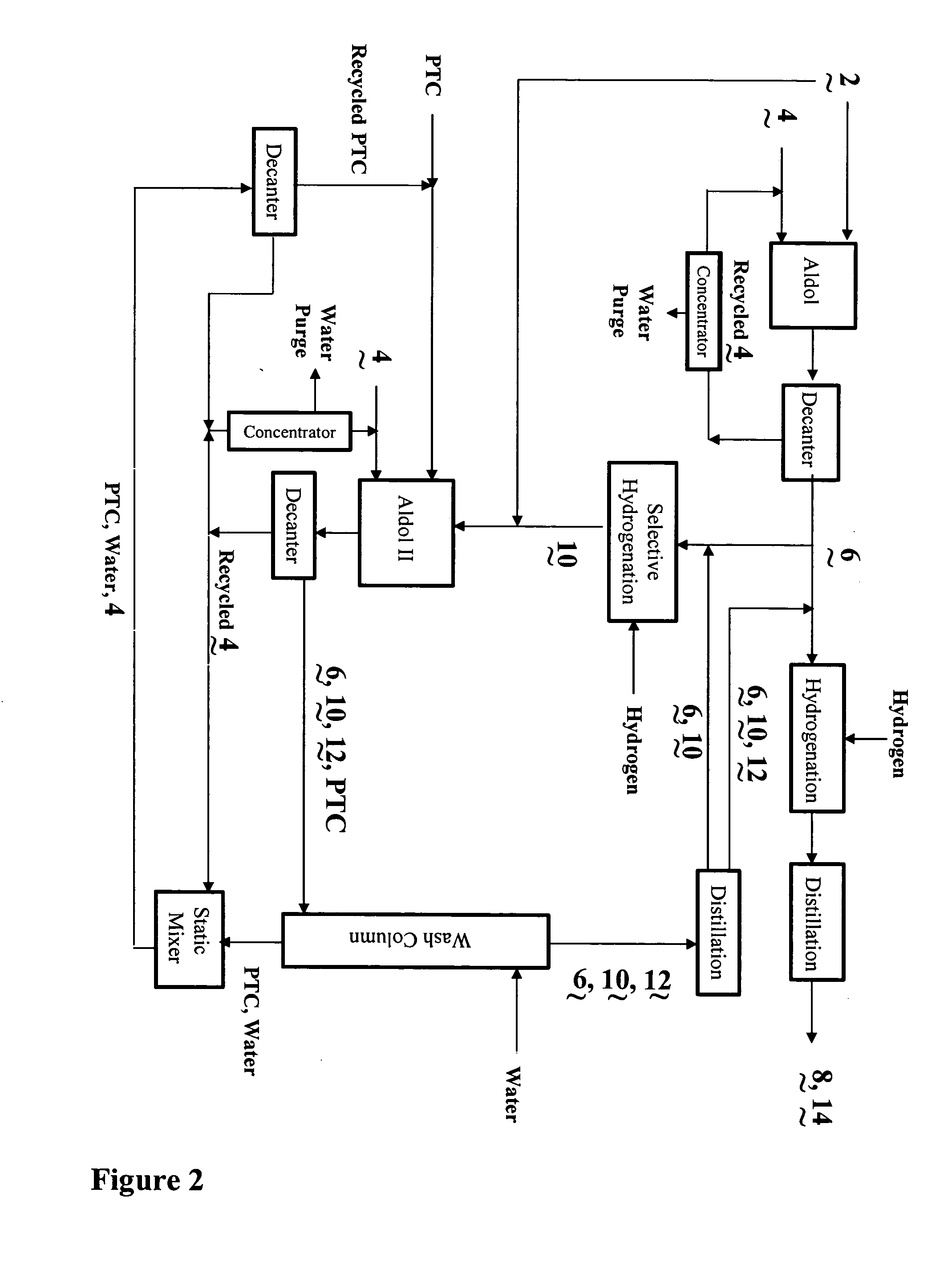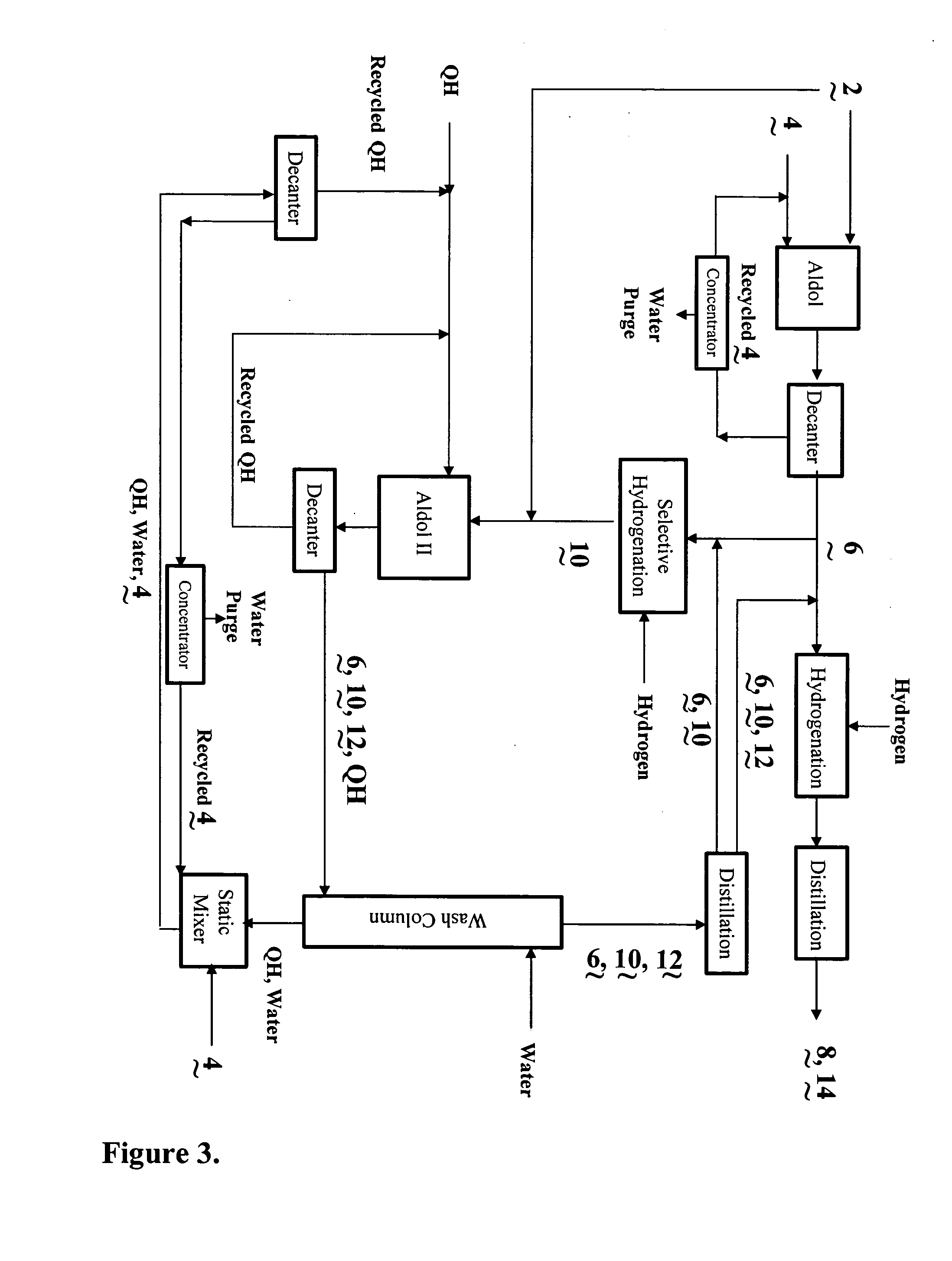Process for the co-production of alcohols
- Summary
- Abstract
- Description
- Claims
- Application Information
AI Technical Summary
Benefits of technology
Problems solved by technology
Method used
Image
Examples
example 1
[0034] A 3-neck 1-liter flask was charged with 25.7 grams of hexadecyltrimethylammonium chloride, 56.3 grams of sodium hydroxide and 132.9 grams of deionized water. To this mixture, an aldehyde solution of 265.4 grams of 2-ethylhexanal and 74.4 grams of n-butyraldehyde was added drop wise. The organic layer was water washed and analyzed by gas chromatography. Yields from n-butyraldehyde were calculated to be 47.4% 2,4-diethyl-2-octenal and 18.1% 2-ethyl-2-hexenal.
example 2
[0035] A 3-neck 1-liter flask was charged with 25.0 grams of tetrabutylammonium chloride, 56.7 grams of sodium hydroxide and 132.7 grams of deionized water. To this mixture, an aldehyde solution of 257.2 grams of 2-ethylhexanal and 75.1 grams of n-butyraldehyde was added drop wise. The organic layer was water washed and analyzed by gas chromatography. Yields from n-butyraldehyde were calculated to be 57.5% 2,4-diethyl-2-octenal and 13.1% 2-ethyl-2-hexenal.
example 3
[0036] A 3-neck 1-liter flask was charged with 29.9 grams of tetrabutylammonium bromide, 56.4 grams of sodium hydroxide and 132.7 grams of deionized water. To this mixture, an aldehyde solution of 260.0 grams of 2-ethylhexanal and 78.6 grams of n-butyraldehyde was added drop wise. The organic layer was water washed and analyzed by gas chromatography. Yields from n-butyraldehyde were calculated to be 58.6% 2,4-diethyl-2-octenal and 15.4% 2-ethyl-2-hexenal.
PUM
| Property | Measurement | Unit |
|---|---|---|
| Percent by mass | aaaaa | aaaaa |
| Angle | aaaaa | aaaaa |
| Angle | aaaaa | aaaaa |
Abstract
Description
Claims
Application Information
 Login to View More
Login to View More - R&D
- Intellectual Property
- Life Sciences
- Materials
- Tech Scout
- Unparalleled Data Quality
- Higher Quality Content
- 60% Fewer Hallucinations
Browse by: Latest US Patents, China's latest patents, Technical Efficacy Thesaurus, Application Domain, Technology Topic, Popular Technical Reports.
© 2025 PatSnap. All rights reserved.Legal|Privacy policy|Modern Slavery Act Transparency Statement|Sitemap|About US| Contact US: help@patsnap.com



